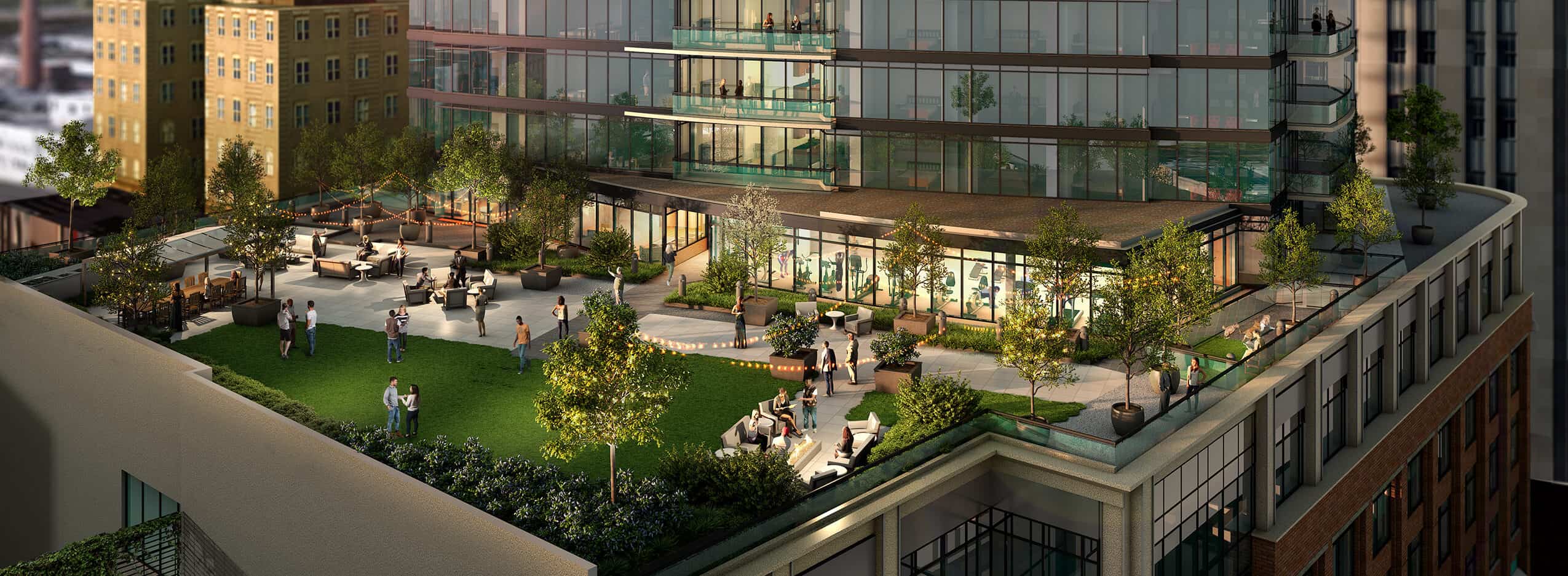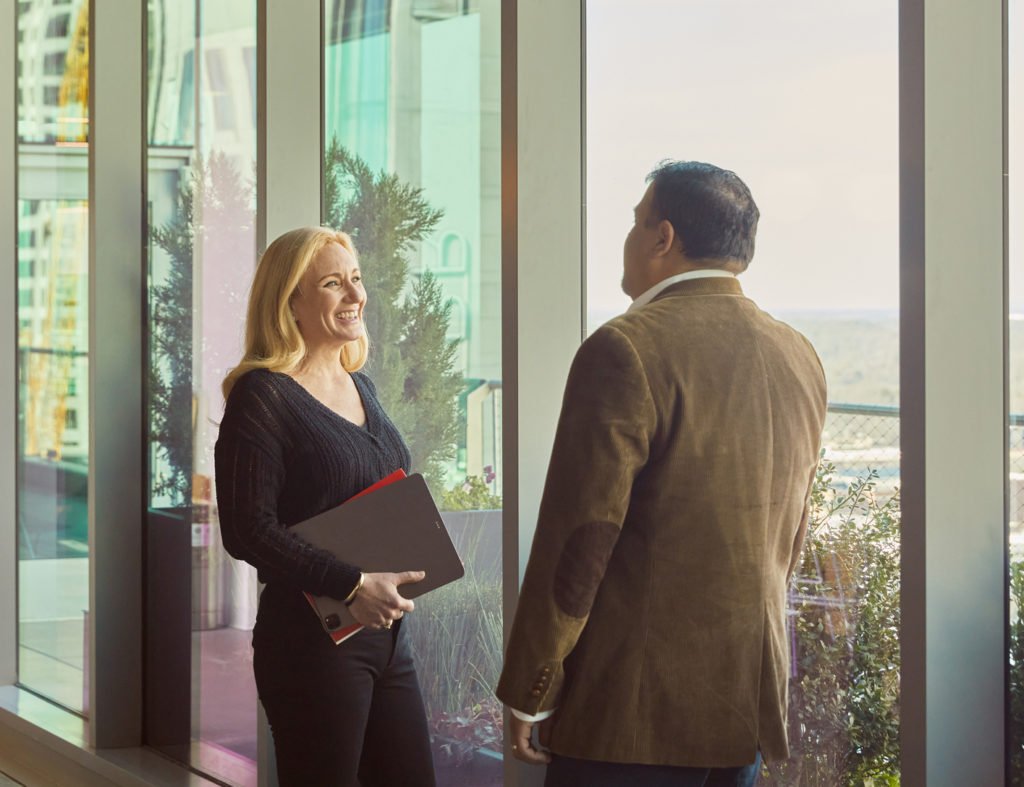As an outdoorsy and appropriately naïve teenager, I was determined that I would never have a desk job. My desire to spend more time outside led to some fantastic, if not profitable, early work experiences, and ultimately to becoming a landscape architect. While I now log quite a few hours at a desk, I spend that time trying to draw others’ outdoors through the spaces I design. What I felt intuitively in my youth is now backed up by significant research in several fields, broadly coalesced under biophilia, which continues to show the benefits to our health, productivity and happiness when we have a greater connection to the outdoors. Armed with this understanding of these tangible benefits to employees and employers, we must expand our conception of the work environment to a more holistic view that is not bound by the office walls.
Our current health crisis has added an urgency to envisioning our workplaces not only as buildings, but as buildings engaged with the landscape. Some of the best spaces to gather with our co-workers are outdoor spaces, so investing in them now will be essential to maintaining workplace culture and continuing to provide tangible benefits to employee health, happiness and productivity once the pandemic is under control. Employers can emerge with new outdoor rooms and a flexible work culture in which employees move from inside to outside throughout the day.

The character of outdoor work is ultimately site specific. In the urban core, you may look at creating or upgrading elevated patios and rooftop spaces. In suburban or rural sites, the office needs to be re-imagined as a campus, with underused or overlooked spaces being activated much like a park or a plaza. The most easily programmable spaces will provide much of the infrastructure and amenities of indoor spaces and will resemble open air pavilions. If we can provide shade, cover from rain, power, network access and the all-important water and coffee station, a business will have a reliable outdoor space where employees can schedule meetings without checking the weather report. These spaces can be created as permanent campus amenities, but there are also opportunities for temporary spaces that can serve as extra capacity for the short term and allow for site experimentation.
A successful campus strategy may include open air pavilions, but it should also identify a range of outdoor niches to create more choice and flexibility. People have environmental preferences and comfort levels that vary across regions, cultures and categories. Some people will feel comfortable or even find it desirable to work on a bench at the edge of the campus with a power outlet and available Wi-Fi, while others will never leave the pavilion. Like any animal, humans have preferred habitats and our preferences will change throughout the day and the seasons. Movable café tables and modular furniture that can scale up and down as needed will allow the greatest flexibility and adaptability.
Now and in the future, employees will be more satisfied if they can choose where they work throughout the day or week. Design Principal Jim Thompson recently described the current opportunity when he said, “People have grown accustomed to working in their gardens, and when they get back to the office, they will be asking ‘where is the garden?’”. We need to recognize that our workplaces exist in landscapes that may be more significant and beneficial than the built environment alone. The more we connect to natural settings and adapt them for varied purposes, the more our workspaces become bigger and more flexible, with benefits in the near term and beyond.
View our Beyond Workplace book on Issuu here.

